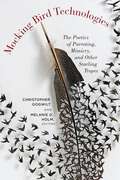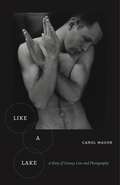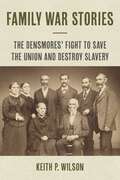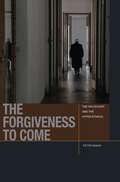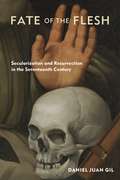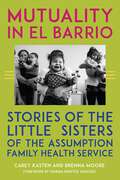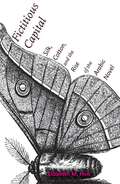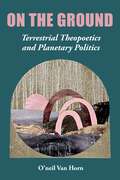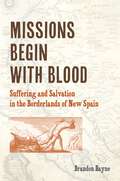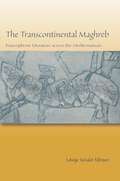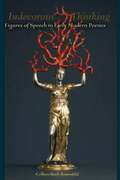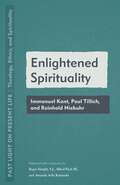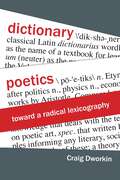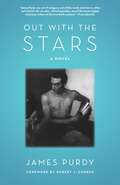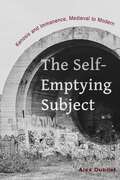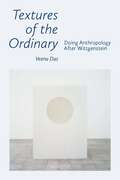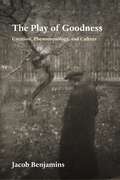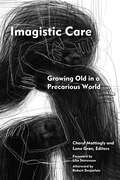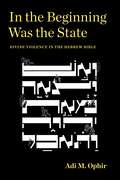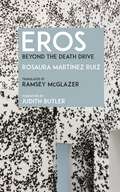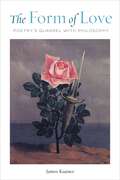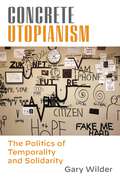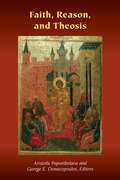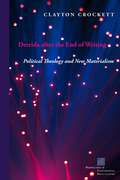- Table View
- List View
Mocking Bird Technologies: The Poetics of Parroting, Mimicry, and Other Starling Tropes
by Christopher GoGwilt and Melanie D. HolmContributors: Madeleine Brainerd, Joe Conway, Fraser Easton, Christopher GoGwilt, Shari Goldberg, Melanie D. Holm, Sarah Kay, Kaori T. Kitao, Holt V. Meyer, Isabel A. Moore, Fawzia Mustafa, Gavin Sourgen.Mocking Bird Technologies brings together a range of perspectives to offer an extended meditation on bird mimicry in literature: the way birds mimic humans, the way humans mimic birds, and the way mimicry of any kind involves technologies that extend across as well as beyond languages and species. The essays examine the historical, poetic, and semiotic problem of mimesis exemplified both by the imitative behavior of parrots, starlings, and other mocking birds, and by the poetic trope of such birds in a range of literary and philological traditions. Drawing from a cross-section of traditional periods and fields in literary studies (18th-century studies, romantic studies, early American studies, 20th-century studies, and postcolonial studies), the collection offers new models for combining comparative and global studies of literature and culture.EditorsChristopher GoGwilt is Professor of English and Comparative Literature at Fordham University. He is the author of The Passage of Literature: Genealogies of Modernism in Conrad, Rhys, and Pramoedya (Oxford, 2011), The Fiction of Geopolitics: Afterimages of Culture from Wilkie Collins to Alfred Hitchcock (Stanford, 2000), and The Invention of the West: Joseph Conrad and the Double-Mapping of Europe and Empire (Stanford, 1995).Melanie D. Holm is Assistant Professor of the English Department and Graduate Program of Literature and Criticism at Indiana University of Pennsylvania. She also teaches in the university’s Women’s and Gender Studies program. Her scholarly focus is on eighteenth-century literature and skepticism.ContributorsMadeleine Brainerd taught at Washington University in St. Louis and at Excelsior College. Since 2004 she has taught therapeutic yoga and medical qi gong in New York City, at the Integral Yoga Institute, Kenshikai Dojo, Gouverneur Hospital, and other venues. She studies histories of yoga’s intersections with ecological in/justice, animality, and affect theory.Joe Conway is an Assistant Professor of American Literature at the University of Alabama in Huntsville. His articles have appeared or are scheduled to appear in the journals Women’s Studies, Early American Literature, and Nineteenth-Century Contexts. He is currently at work on a monograph about the social life of antebellum money that charts how discourses of noneconomic phenomena such as medicine, race, nationalism, and aesthetics informed nineteenth-century debates about what constitutes good money.Fraser Easton is Associate Professor of English, University of Waterloo, Canada. A specialist in eighteenth-century literature, he has published on Jane Austen, Daniel Defoe, Maria Edgeworth, and Christopher Smart, as well as on newspaper records and historical accounts of passing women in the eighteenth century.Shari Goldberg is Assistant Professor of English at Franklin & Marshall College in Lancaster, Pennsylvania. She is the author of Quiet Testimony: A Theory of Witnessing from Nineteenth-Century American Literature (Fordham, 2013). She has also published essays on silence, politics, and personhood in American literature. Her current research focuses on late-nineteenth-century models of mind and person in narrative and psychological writing.Sarah Kay teaches French and Medieval Studies at New York University. She has written widely on medieval literature across languages, genres, and periods; her work combines the study of medieval texts, especially troubadour songs, with philosophical and theoretical inquiry. Her two most recent books are Parrots and Nightingales: Troubadour Quotations and the Development of European Poetry (2013) and Animal Skins and the Reading Self in Medieval Latin and French Bestiaries (2017).<b
Like a Lake: A Story of Uneasy Love and Photography
by Carol MavorA vivid, imaginative response to the sensual and erotic in postwar American photography, with attention to the beauty of the nude, both male and femaleWhen photographer Coda Gray befriends a family with a special interest in a young boy, the motivation behind his special attention is difficult to grasp, “like water slipping through our fingers.” Can a man innocently love a boy who is not his own?Using fiction to reveal the truths about families, communities, art objects, love, and mourning, Like a Lake tells the story of ten-year-old Nico, who lives with his father (an Italian- American architect) and his mother (a Japanese-American sculptor who learned how to draw while interned during World War II). Set in the 1960s, this is a story of aesthetic perfection waiting to be broken. Nico’s midcentury modern house, with its Italian pottery jars along the outside and its interior lit by Japanese lanterns. The elephant-hide gray, fiberglass reinforced plastic 1951 Eames rocking chair, with metal legs and birch runners. Clam consommé with kombu, giant kelp, yuzu rind, and a little fennel—in each bowl, two clams opened like a pair of butterflies, symbols of the happy couple. Nico’s boyish delight in developing photographs under the red safety light of Coda’s “Floating Zendo”— the darkroom boat that he keeps on Lake Tahoe.The lives of Nico, his parents, and Coda embody northern California’s postwar landscape, giving way to fissures of alternative lifestyles and poetic visions. Author Carol Mavor addresses the sensuality and complexity of a son’s love for his mother and that mother’s own erotic response to it. The relationship between the mother and son is paralleled by what it means for a boy to be a model for a male photographer and to be his muse. Just as water can freeze into snow and ice, melt back into water, and steam, love takes on new forms with shifts of atmosphere. Like a Lake’s haunting images and sensations stay with the reader.
Family War Stories: The Densmores' Fight to Save the Union and Destroy Slavery (The North's Civil War)
by Keith P. WilsonBased on an extensive collection of letters written from the home front and the battlefront, Family War Stories offers fresh insights into how the reciprocal nature of family correspondence can shape a family’s understanding of the war.Family War Stories examines the contribution of the Densmore family to the Northern Civil War effort. It extends the boundaries of research in two directions. First, by describing how members of this white family from Minnesota were mobilized to fight a family war on the home front and the battlefront, and second, by exploring how the war challenged the family’s abolitionist beliefs and racial attitudes. Family War Stories argues that the totality of the family’s Civil War experience was intricately shaped by the dynamics of family life and the reciprocal nature of family correspondence. Further, it argues that the serving sons’ understanding of the war was shaped by their direct military experiences in the army camps and battlefields and how their loved ones at home interpreted these experiences.With two sons serving as officers in the United States Colored Troops’ regiments fighting in the Mississippi Valley, the Densmore family was heavily involved in destroying slavery. Family War Stories analyses how the sons’ military experiences tested the family’s abolitionist ideology and its commitment to white racial superiority. It also explains how the family sought to accommodate the presence of a refugee from slavery working in the family kitchen. In some ways, the presence of this worker in the household posed an even greater range of challenges to the family’s racial beliefs than the sons’ military service.By examining one family’s deep involvement in the war against slavery, Wilson analyses how the Civil War posed particular challenges to Northerners committed to abolitionism and white supremacy.
The Forgiveness to Come: The Holocaust and the Hyper-Ethical (Just Ideas)
by Peter Jason BankiThis book is concerned with the aporias, or impasses, of forgiveness, especially in relation to the legacy of the crimes against humanity perpetrated by the Nazis and their collaborators during World War II. Banki argues that, while forgiveness of the Holocaust is and will remain impossible, we cannot rest upon that impossibility. Rather, the impossibility of forgiveness must be thought in another way. In an epoch of “worldwidization,” we may not be able simply to escape the violence of scenes and rhetoric that repeatedly portray apology, reconciliation, and forgiveness as accomplishable acts. Accompanied by Jacques Derrida’s thought of forgiveness of the unforgivable, and its elaboration in relation to crimes against humanity, the book undertakes close readings of literary, philosophical, and cinematic texts by Simon Wiesenthal, Jean Améry, Vladimir Jankélévitch, Robert Antelme and Eva Mozes Kor. These texts contend with the idea that the crimes of the Nazis are inexpiable, that they lie beyond any possible atonement or repair. Banki argues that the juridical concept of crimes against humanity calls for a thought of forgiveness—one that would not imply closure of the infinite wounds of the past. How could such a forgiveness be thought or dreamed? Banki shows that if today we cannot simply escape the “worldwidization” of forgiveness, then it is necessary to rethink what forgiveness is, the conditions under which it supposedly takes place, and especially its relation to justice.
Fate of the Flesh: Secularization and Resurrection in the Seventeenth Century
by Daniel Juan GilIn the seventeenth century the ancient hope for the physical resurrection of the body and its flesh began an unexpected second life as critical theory, challenging the notion of an autonomous self and driving early modern avant-garde poetry. As an emerging empirical scientific world view and a rising Cartesian dualist ontology transformed the ancient hope for the resurrection of the flesh into the fantasy of a soul or mind living on separately from any body, literature complicated the terms of the debate. Such poets as Donne, Herbert, Vaughan, and Jonson picked up the discarded idea of the resurrection of the flesh and bent it from an apocalyptic future into the here and now to imagine the self already infused with the strange, vibrant materiality of the resurrection body.Fate of the Flesh explores what happens when seventeenth-century poets posit a resurrection body within the historical person. These poets see the resurrection body as the precondition for the social person’s identities and forms of agency and yet as deeply other to all such identities and agencies, an alien within the self that both enables and undercuts life as a social person. This perspective leads seventeenth-century poets to a compelling awareness of the unsettling materiality within the heart of the self and allows them to re-imagine agency, selfhood, and the natural world in its light. By developing a poetics that seeks a deranging materiality within the self, these poets anticipate twentieth-century “avant-garde” poetics. They frame their poems neither as simple representation nor as beautiful objects but as a form of social praxis that creates new communities of readers and writers assembled around a new experience of self-as-body mediated by poetry.
Mutuality in El Barrio: Stories of the Little Sisters of the Assumption Family Health Service
by Brenna Moore Carey KastenThe stories of 18 immigrant families from East Harlem and their experiences with one of New York’s deeply-rooted organizationsOn any given weekday, people stream in and out of Little Sisters of the Assumption Family Health Service’s bright, airy building on 115th Street. They are mostly mothers who find their way to LSA, sometimes only weeks after crossing the border from Mexico, having heard of the support that las hermanitas (“the little sisters”) offer. Opening a window into the world of New York’s Spanish-speaking newcomers, Mutuality in El Barrio combines oral histories with archival research of the history, spirituality, and ministry of LSA to present how this well-established organization serves vulnerable populations with a unique approach they call “mutuality.”LSA is part of a network of East Harlem’s powerful grassroots organizations that draws from the remarkable strengths of local families in its community. It is a place of healing and empowerment focused on the overall holistic health of resident families. Long-term relationships are cultivated here rather than quick fixes, and it is a place that nurtures people’s full potential as leaders, parents, and advocates for themselves. In Mutuality in El Barrio, eighteen mothers share how, through the help of LSA, they managed to navigate a strange city and an unfamiliar language in a neighborhood that has long been a site of incredible challenges and extraordinary strength, creativity, and cultural vitality.These personal accounts of mothers, long-time LSA staff, and nuns reveal how these women found solidarity, accompaniment, care, neighborhood transformation, and binding connections through mutuality that helped them grow and connect in East Harlem. Their stories shine a light on an organization that began as a small community of vowed nuns who, like these mothers, also trace their origins abroad.
Fictitious Capital: Silk, Cotton, and the Rise of the Arabic Novel
by Elizabeth M. HoltThe ups and downs of silk, cotton, and stocks syncopated with serialized novels in the late-nineteenth-century Arabic press: Time itself was changing. Novels of debt, dissimulation, and risk begin to appear in Arabic at a moment when France and Britain were unseating the Ottoman legacy in Beirut, Cairo, and beyond. Amid booms and crashes, serialized Arabic fiction and finance at once tell the other’s story.While scholars of Arabic often write of a Nahdah, a sense of renaissance, Fictitious Capital argues instead that we read the trope of Nahdah as Walter Benjamin might have, as “one of the monuments of the bourgeoisie that [are] already in ruins.” Financial speculation engendered an anxious mixture of hope and fear formally expressed in the mingling of financial news and serialized novels in such Arabic journals as Al-Jinān, Al-Muqtataf, and Al-Hilāl. Holt recasts the historiography of the Nahdah, showing its sense of rise and renaissance to be a utopian, imperially mediated narrative of capital that encrypted its inevitable counterpart, capital flight.
On the Ground: Terrestrial Theopoetics and Planetary Politics
by O'neil Van HornA bold, theoretical, and pragmatic book that looks to soil as a symbol for constructive possibilities for hope and planetary political action in the Anthropocene.Climate change is here. Its ravaging effects will upend our interconnected ecosystems, and yet those effects will play out disproportionately among the planet’s nearly 8 billion human inhabitants. On the Ground explores how one might account for the many paradoxical tensions posed by the Anthropocene: tensions between planetarity and particularity, connectivity and contextuality, entanglement and exclusion. Using the philosophical and theological idea of “ground,” Van Horn argues that ground—when read as earth-ground, as soil—offers a symbol for conceiving of the effects of climate change as collective and yet located, as communal and yet differential. In so doing, he offers critical interventions on theorizations of hope and political action amid the crises of climate change.Drawing on soil science, theopoetics, feminist ethics, poststructuralism, process philosophy, and more, On the Ground asks: In the face of global climate catastrophe, how might one theorize this calamitous experience as shared and yet particular, as interconnected and yet contextual? Might there be a way to conceptualize our interconnected experiences without erasing critical constitutive differences, particularly of social and ecological location? How might these conceptual interventions catalyze pluralistic, anti-racist planetary politics amid the Anthropocene? In short, the book addresses these queries: What philosophical and theological concepts can soil create? How might soil inspire and help re-imagine forms of planetary politics in the midst of climate change? On the Ground thus roots us in a robust theoretical symbol in the hopes of producing and proliferating intersectional responses to climate change.
Missions Begin with Blood: Suffering and Salvation in the Borderlands of New Spain (Catholic Practice in North America)
by Brandon BayneWinner, 2022 Frank S. and Elizabeth D. Brewer PrizeWhile the idea that successful missions needed Indigenous revolts and missionary deaths seems counterintuitive, this book illustrates how it became a central logic of frontier colonization in Spanish North America. Missions Begin with Blood argues that martyrdom acted as a ceremony of possession that helped Jesuits understand violence, disease, and death as ways that God inevitably worked to advance Christendom. Whether petitioning superiors for support, preparing to extirpate Native “idolatries,” or protecting their conversions from critics, Jesuits found power in their persecution and victory in their victimization. This book correlates these tales of sacrifice to deep genealogies of redemptive death in Catholic discourse and explains how martyrological idioms worked to rationalize early modern colonialism. Specifically, missionaries invoked an agricultural metaphor that reconfigured suffering into seed that, when watered by sweat and blood, would one day bring a rich harvest of Indigenous Christianity.
The Transcontinental Maghreb: Francophone Literature across the Mediterranean
by Edwige Tamalet TalbayevThe writer Gabriel Audisio once called the Mediterranean a “liquid continent.” Taking up the challenge issued by Audisio’s phrase, Edwige Tamalet Talbayev insists that we understand the region on both sides of the Mediterranean through a “transcontinental” heuristic. Rather than merely read the Maghreb in the context of its European colonizers from across the Mediterranean, Talbayev compellingly argues for a transmaritime deployment of the Maghreb across the multiple Mediterranean sites to which it has been materially and culturally bound for millennia.The Transcontinental Maghreb reveals these Mediterranean imaginaries to intersect with Maghrebi claims to an inclusive, democratic national ideal yet to be realized. Through a sustained reflection on allegory and critical melancholia, the book shows how the Mediterranean decenters postcolonial nation-building projects and mediates the nomadic subject’s reinsertion into a national collective respectful of heterogeneity. In engaging the space of the sea, the hybridity it produces, and the way it has shaped such historical dynamics as globalization, imperialism, decolonization, and nationalism, the book rethinks the very nature of postcolonial histories and identities along its shores.
Indecorous Thinking: Figures of Speech in Early Modern Poetics
by Colleen Ruth RosenfeldIndecorous Thinking is a study of artifice at its most conspicuous: it argues that early modern writers turned to figures of speech like simile, antithesis, and periphrasis as the instruments of a particular kind of thinking unique to the emergent field of vernacular poesie. The classical ideal of decorum described the absence of visible art as a precondition for rhetoric, civics, and beauty: speaking well meant speaking as if off-the-cuff. Against this ideal, Rosenfeld argues that one of early modern literature's richest contributions to poetics is the idea that indecorous art—artifice that rings out with the bells and whistles of ornamentation—celebrates the craft of poetry even as it expands poetry’s range of activities. Rosenfeld details a lost legacy of humanism that contributes to contemporary debates over literary studies’ singular but deeply ambivalent commitment to form. Form, she argues, must be reexamined through the legacy of figure. Reading poetry by Philip Sidney, Edmund Spenser, and Mary Wroth alongside pedagogical debates of the period and the emergence of empiricism, with its signature commitment to the plain style, Rosenfeld offers a robust account of the triumphs and embarrassments that attended the conspicuous display of artifice. Drawing widely across the arts of rhetoric, dialectic, and poetics, Indecorous Thinking offers a defense of the epistemological value of form: not as a sign of the aesthetic but as the source of a particular kind of knowledge we might call poetic.
Enlightened Spirituality: Immanuel Kant, Paul Tillich, and Reinhold Niebuhr (Past Light on Present Life: Theology, Ethics, and Spirituality)
by Roger Haight, SJ, Alfred Pach III, and Amanda Avila KaminskiThis volume presents reflections on the nature of Christian spirituality in the light of Immanuel Kant’s work Fundamental Principles of the Metaphysic of Morals. It also contains two short comments on Kant’s work: Paul Tillich directly engages Kant’s moral philosophy, and Reinhold Niebuhr indirectly addresses him with his reflections on the role of conscience in religious experience. The whole volume rests on the constituent role that morality, and hence ethics, plays in a comprehensive understanding of Christian spirituality. Kant adds to that discussion by introducing the voice of the Enlightenment into the conversation. His work serves as a bridge between the spirituality displayed in the Medieval and Reformation periods and what may be called modern Western culture. Christians who are socialized into twenty-first century Western intellectual culture may be relatively unfamiliar with the cultures that spawned the characteristic accents of the spiritual languages that are learned in the churches today. When they move into the world of higher education, they will learn a whole series of ideas from science and critical modern thought that directly challenge the ordinary spiritual conceptions of church traditions. The critical discussion between intellectual culture and Christianity during the period of the Enlightenment was deep and serious, and it helps to explain how the churches in the West relate to present-day intellectual culture. Kant’s text on the metaphysics of morals presents in an exemplary way the deep questions that Christian spirituality faces today with almost laboratory precision. The two commentators neatly draw the conversation into contexts that are closer to life in the world of our time.
Dictionary Poetics: Toward a Radical Lexicography (Verbal Arts: Studies in Poetics)
by Craig DworkinThe new ways of writing pioneered by the literary avant-garde invite new ways of reading commensurate with their modes of composition. Dictionary Poetics examines one of those modes: book-length poems, from Louis Zukofsky to Harryette Mullen, all structured by particular editions of specific dictionaries. By reading these poems in tandem with their source texts, Dworkin puts paid to the notion that even the most abstract and fragmentary avant-garde literature is nonsensical, meaningless, or impenetrable. When read from the right perspective, passages that at first appear to be discontinuous, irrational, or hopelessly cryptic suddenly appear logically consistent, rationally structured, and thematically coherent.Following a methodology of “critical description,” Dictionary Poetics maps the material surfaces of poems, tracing the networks of signifiers that undergird the more familiar representational schemes with which conventional readings have been traditionally concerned. In the process, this book demonstrates that new ways of reading can yield significant interpretive payoffs, open otherwise unavailable critical insights into the formal and semantic structures of a composition, and transform our understanding of literary texts at their most fundamental levels.
Out with the Stars
by James PurdyFollowing the discovery of an anonymous libretto, Abner Blossom comes out of retirement to write an opera based on the life of infamous novelist-turned-photographer Cyril Vane. But those who knew Vane and his Russian-born wife, the silent-screen star Madame Olga Petrovna, are prepared to go to any length to suppress the truth about them. Vane’s dark secret follows him to the grave. But his jealous and vengeful widow and her faded cronies employ all the means at their disposal to prevent the opening of Blossom’s opera. Out with the Stars is peopled by the Gothic characters readers of James Purdy have come to anticipate and relish, from Val Sturgis, Kentucky boy made good and now Blossom’s protégé to Francis X. Beauregard, aging star of the silver screen now living surrounded by streetwise hustlers in his Brooklyn mansion.Back in print for the first time since 1993, Purdy’s flamboyant tale of New York City’s pre-Stonewall bohemia includes an incisive Foreword by Robert J. Corber, placing the work within its rich social and cultural context.
The Self-Emptying Subject: Kenosis and Immanence, Medieval to Modern
by Alex DubiletAgainst the two dominant ethical paradigms of continental philosophy–Emmanuel Levinas’s ethics of the Other and Michel Foucault’s ethics of self-cultivation—The Self-Emptying Subject theorizes an ethics of self-emptying, or kenosis, that reveals the immanence of an impersonal and dispossessed life “without a why.” Rather than aligning immanence with the enclosures of the subject, The Self-Emptying Subject engages the history of Christian mystical theology, modern philosophy, and contemporary theories of the subject to rethink immanence as what precedes and exceeds the very difference between the (human) self and the (divine) other, between the subject and transcendence. By arguing that transcendence operates and subjects life in secular no less than in religious domains, this book challenges the dominant distribution of concepts in contemporary theoretical discourse, which insists on associating transcendence exclusively with religion and theology and immanence exclusively with modern secularity and philosophy.The Self-Emptying Subject argues that it is important to resist framing the relationship between medieval theology and modern philosophy as a transition from the affirmation of divine transcendence to the establishment of autonomous subjects. Through an engagement with Meister Eckhart, G.W.F. Hegel, and Georges Bataille, it uncovers a medieval theological discourse that rejects the primacy of pious subjects and the transcendence of God (Eckhart); retrieves a modern philosophical discourse that critiques the creation of self-standing subjects through a speculative re-writing of the concepts of Christian theology (Hegel); and explores a discursive site that demonstrates the subjecting effects of transcendence across theological and philosophical operations and archives (Bataille). Taken together, these interpretations suggest that if we suspend the antagonistic relationship between theological and philosophical discourses, and decenter our periodizing assumptions and practices, we might encounter a yet unmapped theoretical fecundity of self-emptying that frees life from transcendent powers that incessantly subject it for their own ends.
Textures of the Ordinary: Doing Anthropology after Wittgenstein (Thinking from Elsewhere)
by Veena DasHow might we speak of human life amid violence, deprivation, or disease so intrusive as to put the idea of the human into question? How can scholarship and advocacy address new forms of war or the slow, corrosive violence that belie democracy's promise to mitigate human suffering? To Veena Das, the answers to these question lie not in foundational ideas about human nature but in a close attention to the diverse ways in which the natural and the social mutually absorb each other on a daily basis. Textures of the Ordinary shows how anthropology finds a companionship with philosophy in the exploration of everyday life. Based on two decades of ethnographic work among low-income urban families in India, Das shows how the notion of texture aligns ethnography with the anthropological tone in Wittgenstein and Cavell, as well as in literary texts. Das shows that doing anthropology after Wittgenstein does not consist in taking over a new set of terms such as forms of life, language games, or private language from Wittgenstein’s philosophy. Instead, we must learn to see what eludes us in the everyday precisely because it is before our eyes. The book shows different routes of return to the everyday as it is corroded not only by catastrophic events but also by repetitive and routine violence within everyday life itself. As an alternative to normative ethics, this book develops ordinary ethics as attentiveness to the other and as the ability of small acts of care to stand up to horrific violence.Textures of the Ordinary offers a model of thinking in which concepts and experience are shown to be mutually vulnerable. With questions returned to repeatedly throughout the text and over a lifetime, this book is an intellectually intimate invitation into the ordinary, that which is most simple yet most difficult to perceive in our lives.
The Play of Goodness: Creation, Phenomenology, and Culture (Perspectives in Continental Philosophy)
by Jacob BenjaminsOne of the enduring claims in the Christian tradition is that creation is good. Given the diversity of experience and the abundance of suffering in the world, however, such an affirmation is not always straightforward. The Play of Goodness provides a phenomenology of creation’s goodness that clarifies the ongoing relevance of the doctrine today. It argues that what is “good” about creation is not synonymous with a confession of faith and does not require an overly optimistic disposition, but instead appears within diverse and often surprising circumstances.Alongside original contributions to French phenomenology and creation theology, The Play of Goodness counterbalances a tendency in continental philosophy to focus on negative phenomena. By developing the philosophical concept of a prelinguistic experience of goodness, the book identifies a quality of goodness that is integral to the place in which we find ourselves. It also articulates shared points of contact among people in an increasingly polarized world, while demonstrating that distinctly theological concepts do not need to be presented in opposition to secular, agnostic, or atheist perspectives in order to be relevant. Benjamins develops an account of creation’s goodness that has the potential to animate an abiding affection for one’s place, accentuate our reasons to care for it, and confirm that what happens in our lives is of genuine significance.
Imagistic Care: Growing Old in a Precarious World (Thinking from Elsewhere)
by Cheryl MattinglyImagistic Care explores ethnographically how images function in our concepts, our writing, our fieldwork, and our lives. With contributions from anthropologists, philosophers and an artist, the volume asks: How can imagistic inquiries help us understand the complex entanglements of self and other, dependence and independency, frailty and charisma, notions of good and bad aging, and norms and practices of care in old age? And how can imagistic inquiries offer grounds for critique? Cutting between ethnography, phenomenology and art, this volume offers a powerful contribution to understandings of growing old. The images created in words and drawings are used to complicate rather than simplify the world. The contributors advance an understanding of care, and of aging itself, marked by alterity, spectral presences and uncertainty.Contributors: Rasmus Dyring, Harmandeep Kaur Gill, Lone Grøn, Maria Louw, Cheryl Mattingly, Lotte Meinert, Maria Speyer, Helle S. Wentzer, Susan Reynolds Whyte
In the Beginning Was the State: Divine Violence in the Hebrew Bible (Idiom: Inventing Writing Theory)
by Adi M. OphirThis book explores God’s use of violence as depicted in the Hebrew Bible. Focusing on the Pentateuch, it reads biblical narratives and codes of law as documenting formations of theopolitical imagination. Ophir deciphers the logic of divine rule that these documents betray, with a special attention to the place of violence within it. The book draws from contemporary biblical scholarship, while also engaging critically with contemporary political theory and political theology, including the work of Walter Benjamin, Giorgio Agamben, Jan Assmann, Regina Schwartz, and Michael Walzer.Ophir focuses on three distinct theocratic formations: the rule of disaster, where catastrophes are used as means of governance; the biopolitical rule of the holy, where divine violence is spatially demarcated and personally targeted; and the rule of law where divine violence is vividly remembered and its return is projected, anticipated, and yet postponed, creating a prolonged lull for the text’s present.Different as these formations are, Ophir shows how they share an urform that anticipates the main outlines of the modern European state, which has monopolized the entire globe. A critique of the modern state, the book argues, must begin in revisiting the deification of the state, unpacking its mostly repressed theological dimension.
Eros: Beyond the Death Drive
by Rosaura Martínez RuizEros considers a promise left unfulfilled in Sigmund Freud’s Beyond the Pleasure Principle. Rosaura Martínez Ruiz argues that when the pleasure principle comes into contact with the death drive (the human tendency toward aggression or cruelty), the psyche can take detours that, without going beyond the limit of the pleasure principle, can nevertheless defer it. Eros reflects on these deviations of the pleasure principle, in the political sphere and in the intimate realm. Following these erotic paths, Martínez argues that the forces of the death drive can only be resisted if resistance is understood as an ongoing process. In such an effort, erotic action and the construction of pathways for sublimation are never-ending ethical and political tasks. We know that these tasks cannot be finally accomplished, yet they remain imperative and undeniably urgent.If psychoanalysis and deconstruction teach us that the death drive is insurmountable, through aesthetic creation and political action we can nevertheless delay, defer, and postpone it. Calling for the formation and maintenance of a “community of mourning duelists,” this book seeks to imagine and affirm the kind of “erotic battalion” that might yet be mobilized against injustice. This battalion’s mourning, Martínez argues, must be ongoing, open-ended, combative, and tenaciously committed to the complexity of ethical and political life.
The Form of Love: Poetry’s Quarrel with Philosophy
by James KuznerCan poetry articulate something about love that philosophy cannot? The Form of Love argues that it can. In close readings of seven “metaphysical” poems, the book shows how poets of the early modern period and beyond use poetic form to turn philosophy to other ends, in order not to represent the truth about love but to create a virtual experience of love, in all its guises. The Form of Love shows how verse creates love that can’t exist without poetry’s specific affordances, and how poems can, in their impossibility, prompt love’s radical re-imagining. Like the philosophies on which they draw, metaphysical poems imagine love as an intense form of non-sovereignty, of giving up control. They even imagine love as a liberating bondage—to a friend, a beloved, a saint, a God, or a garden. Yet these poems create strange, striking versions of such love, made in, rather than through, the devices, structures, and forces where love appears.Tracing how poems think, Kuzner argues, requires an intimate form of reading: close—even too close—attention to and thinking with the text. Showing how poetry thinks of love otherwise than other fields, the book reveals how poetry and philosophy can nevertheless enter into a relation that is itself like love.
Concrete Utopianism: The Politics of Temporality and Solidarity
by Gary WilderFinalist, 2022 Big Other Book Award for NonfictionNever before has it been more important for Left thinking to champion expansive visions for societal transformation. Yet influential currents of critical theory have lost sight of this political imperative. Provincial notions of places, periods, and subjects obstruct our capacity to invent new alignments and envision a world we wish to see. Political imagination is misread as optimism. Utopianism is conflated with idealism. Revolutionary traditions of non-liberal universalism and non-bourgeois humanism are rendered illegible. Negative critique becomes an end in itself. Pessimism is mistaken for radicalism and political fatalism risks winning the day. In this book, Gary Wilder insists that we place solidarity and temporality at the center of our political thinking. He develops a critique of Left realism, Left culturalism, and Left pessimism from the standpoint of heterodox Marxism and Black radicalism. These traditions offer precious resources to relate cultural singularity and translocal solidarity, political autonomy and worldwide interdependence. They develop modes of immanent critique and forms of poetic knowledge to envision alternative futures that may already dwell within our world: traces of past ways of being, knowing, and relating that persist within an untimely present; or charged residues of unrealized possibilities that were the focus of an earlier generation’s dreams and struggles; or opportunities for dialectical reversals embedded in the contradictory tendencies of the given order.Concrete Utopianism makes a bold case for embracing what Wilder calls a politics of the possible-impossible. Attentive to the non-identical character of places, periods, and subjects, insisting that axes of political alignment and contestation are neither self-evident nor unchanging, reworking Lenin’s call to “transform the imperial war into a civil war,” he invites Left thinkers see beyond inherited distinctions between here and there, now and then, us and them. Guided by the spirit of Marx’s call for revolutionaries to draw their poetry from a future they cannot fathom yet must nevertheless invent, he calls for practices of anticipation that envision and enact, call for and call forth, seemingly impossible ways of being together. He elaborates a critical orientation that emphasizes the dialectical relations between aesthetics and politics, political imagination and transformative practice, concrete interventions and revolutionary restructuring, past dreams and possible worlds, means of struggle and its ultimate aims. This orientation requires nonrealist epistemologies that do not mistake immediate appearances with the really real. Such epistemologies would allow critics to recognize uncanny and untimely aspects of social life, whether oppressive or potentially emancipatory. They may help actors to render the world subversively uncanny and untimely. They may clear pathways for the kind of critical internationalism and concrete utopianism that Left politics cannot afford to ignore.
Faith, Reason, and Theosis (Orthodox Christianity and Contemporary Thought)
by Aristotle Papanikolaou and George E. DemacopoulosTheosis shapes contemporary Orthodox theology in two ways: positively and negatively. In the positive sense, contemporary Orthodox theologians made theosis the thread that bound together the various aspects of theology in a coherent whole and also interpreted patristic texts, which experienced a renaissance in the twentieth century, even in Orthodox theology. In the negative sense, contemporary theologians used theosis as a triumphalistic club to beat down Catholic and Protestant Christians, claiming that they rejected theosis in favor of either a rationalistic or fideistic approach to Christian life.The essays collected in this volume move beyond this East–West divide by examining the relation between faith, reason, and theosis from Orthodox, Catholic, and Protestant perspectives. A variety of themes are addressed, such as the nature–grace debate and the relation of philosophy to theology, through engagement with such diverse thinkers as Thomas Aquinas, John Wesley, Meister Eckhart, Dionysius the Areopagite, Symeon the New Theologian, Panayiotis Nellas, Vladimir Lossky, Martin Luther, Martin Heidegger, Sergius Bulgakov, John of the Cross, Delores Williams, Evagrius of Pontus, and Hans Urs von Balthasar. The essays in this book are situated within a current thinking on theosis that consists of a common, albeit minimalist, affirmation amidst the flow of differences. The authors in this volume contribute to the historical theological task of complicating the contemporary Orthodox narrative, but they also continue the “theological achievement” of thinking about theosis so that all Christian traditions may be challenged to stretch and shift their understanding of theosis even amidst an ecumenical celebration of the gift of participation in the life of God.
Heritage and Its Missions: Contested Meanings and Constructive Appropriations (Catholic Practice in the Americas)
by Cristóbal Gnecco and Adriana Schmidt DiasExplores how heritage discourses and local publics interact at Catholic mission sites in the southwestern United States, northern Mexico, and the Southern ConeInterdisciplinary in scope and classed under the name “critical heritage studies,” Heritage and Its Missions makes extensive use of ethnographic perspectives to examine heritage not as a collection of inert things upon which a general historical interest is centered, but as a series of active meanings that have consequences in the social, political, and economic arenas. This approach considers the places of interaction between heritage discourses and local publics as constructed spaces where the very materiality of the social and the political unfolds.Heritage and Its Missions brings together researchers from several countries interested in the pre-republican Catholic missions in the Americas as heritage. Each essay discusses the past and current heritage meanings applied to a specific mission by national and multicultural states, local Indigenous and non-Indigenous communities, international heritage institutions, and scholars. They then address how heritage actors produce knowledge from their positioned perspectives; how different actors, collectives, communities, and publics relate to them; how heritage representations are deployed and contested as social facts; and how different conceptions of “heritage” collide, collaborate, and intersperse to produce the meanings around which heritage struggles unfold.
Derrida after the End of Writing: Political Theology and New Materialism (Perspectives in Continental Philosophy)
by Clayton CrockettWhat are we to make of Jacques Derrida’s famous claim that “every other is every other,” if the other could also be an object, a stone or an elementary particle? Derrida’s philosophy is relevant not just for human ethical language and animality, but to profound developments in the physical and natural sciences, as well as ecology. Derrida After the End of Writing argues for the importance of reading Derrida’s later work from a new materialist perspective. In conversation with Heidegger, Lacan, and Deleuze, and critically engaging newer philosophies of speculative realism and object-oriented ontology, Crockett claims that Derrida was never a linguistic idealist. Furthermore, something changes in his later philosophy something that cannot be simply described as a “turn.” In Catherine Malabou’s terms, there is a shift from a motor scheme of writing to a motor scheme of plasticity. Crockett explores some of the implications of interpreting Derrida through the new materialist lens of technicity or plasticity, attending to the significance of ethics, religion, and politics in his later work. By reading Derrida from a new materialist perspective, Crockett provides fresh readings of his ideas of sovereignty, religion, responsibility, and mourning. These new readings produce fruitful engagements with the thinkers who have followed Derrida, including Malabou, Timothy Morton, John D. Caputo, and Karen Barad. Here is a new reading of Derrida that moves beyond conventional understandings of poststructuralism and deconstruction, a reading that is responsive to and critical of some of the crucial developments shaping the humanities today.
